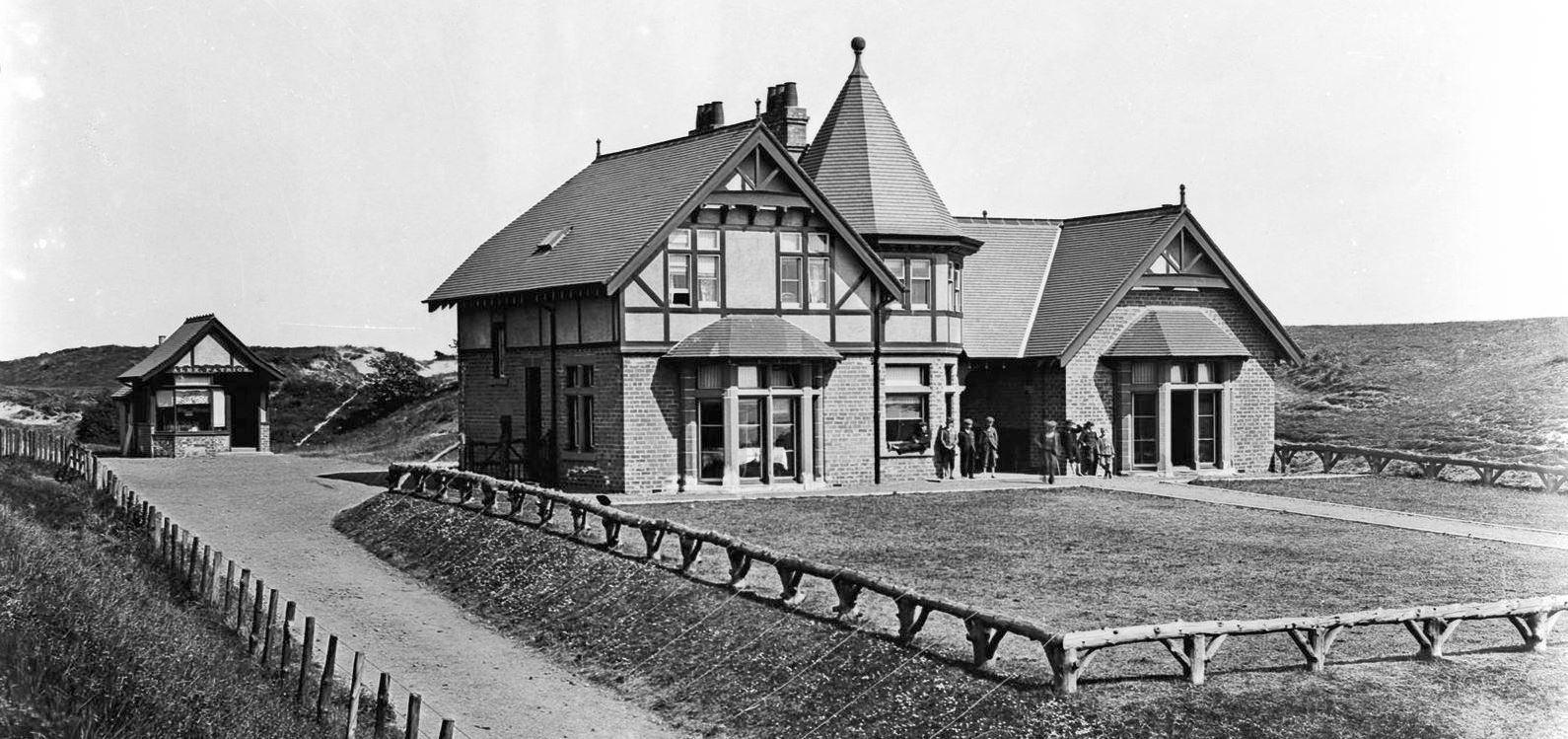Frederick Lumsden
Colin McTaggart
Alexander Philp
Peter Smith
Thomas Sime
Andrew Thomson
The article acknowledged the additional help of "Nicoll Malcolm, David Marshall and James Brown, of the Leven". Robert Smith of Innerleven Club (a Leven draper) seems also to have been involved, as at the time of his death the Courier credited him as being one of the founders of Lundin also. Robert Rintoul of Lahill (previously an Innerleven Captain) was elected the first Lundin Captain. Benjamin Philp (Largo commission agent and father of Alexander Philp mentioned above) was chosen to be the secretary and treasurer.
As A.S. Cunningham notes in his book "Golf Clubs Around Largo Bay" (1909), "the club led a hum-drum existence for for nine years" before "it dropped quietly out of sight in 1877". The club was "resusitated" in 1889. Frederick Lumsden was in the chair at the meeting to reorganise things, held in the Temperance Hall on 16 August. However, it is worth considering why the club failed to gather momentum in its infancy....
Firstly, to examine the local context. Standard Life Assurance Company had owned the Lundin Estate since 1852 and had tried (unsuccessfully) to expand the village of Lundin Mill by creating a development of marine villas and other facilities. By 1868, with plans unfulfilled and only a handful of feus occupied, a new golf club might have offered a final opportunity to stimulate interest in the further development of the village. The advert below dates to 1869 and names Standard Life clerk Mr Robertson as contact regarding summer lets (Edinburgh Evening Courant 15 May). However, by 1870, Standard Life had put the Lundin Estate up for sale. It was finally sold to Allan Gilmour in 1872.
Furthermore, according to the Herald "through his interest several medals were presented to be played for by members of the club, and others, but even with these, and the fact that a considerable amount of money was spent on the upkeep and improvement of the links, there was not sufficient play to make the links on that side quite as good as they ought to have been. The fact was that those good golfers upon the west side of the dyke did not care to face the terrors of the "Straits of Belle Isle" and the rough country they knew lay beyond it". This unflattering description mentions the straits that lie between Newfoundland and Labrador in Canada - a rugged and uninhabited place!
Secondly, looking at the local golfing scene of the time, 1867 saw the nearby Innerleven Golf Club move from Dubbieside (to the west of Leven) to the links on the east of the town (their original course having been encroached upon by works and sidings associated with the neighbouring coal pits). In 1868, the new Innerleven course was extended to Lundin Links prompting the founding of Lundin Golf Club. The Innerleven Club "offered special prizes to Lundin players to play over the new course between Mile Dyke and the last green at Lundin" (Dundee Evening Telegraph 7 Dec 1909). But it would appear that the majority of players favoured a round on the west side of the new extended course to one on the 'benty, tussocky and rife with whin' Lundin side. The Glasgow Herald (6 April 1896) reminded readers that back in 1868 "only four and a half couples put in an appearance at the first meeting" which was played solely on the Lundin course.
Thirdly, it could be that events in the lives of the six local founders contributed further to the stalling of the club early in its existence. Clicking on the links above will take you to more information about the lives of five of the six founders (the sixth will be covered in a future post). Notably, Thomas Sime left Lundin Links for Kilconquhar just a few months after the club's founding. Also in the same year Colin McTaggart's employer - Mrs Durham - sold the Largo estate. He moved with her to Arniston House in Midlothian. In 1870 Frederick Lumsden's wife died, aged 32, leaving him and their six children to readjust to life without her. Peter Smith died in 1871. So external events affected at least four of the six founders very soon after that meeting on 8 May 1868.
Fortunately, the club has gone from strength to strength since 1889. At the time of the building of the new club house in 1896 (illustrated below), John Gilmour of Montrave proposed a toast and hailed the satisfactory position of the club but said that "he must admit the club had had its ups and downs".



 RSS Feed
RSS Feed
